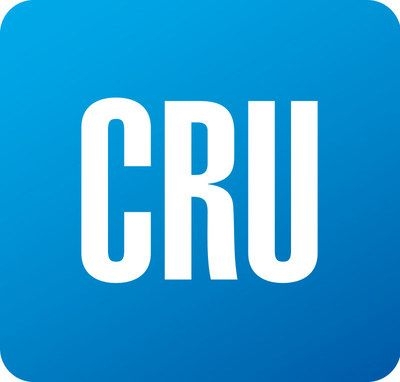Steel Products Prices North America

CRU: Falling U.S. Steel Prices Put Import Offers on Ice
Written by Estelle Tran
January 19, 2022
By CRU Senior Prices Analyst Estelle Tran, from CRU’s Global Steel Trade Service, Jan. 20
U.S. sheet prices fell sharply in the last month, as mills had issues filling their order books and offered steep discounts to convince buyers not to book imports. Multiple buyers said that imports were $400 /s.ton lower than current domestic offerings, however, they were nervous about buying material that would not arrive until April or May. The CRU U.S. Midwest HR coil price slid $184 /s.ton m/m to $1,490 /s.ton, FOB mill, on Jan. 19. Domestic pricing for HDG coil has been stickier but has also fallen, by $109 /s.ton m/m to $1,931 /s.ton. For a while, buyers were interested in booking imports for value-added products, however, enthusiasm for buying imports has waned with shortening domestic lead times and falling prices.
Service centers are getting nervous about swelling inventory levels as customers delay or cancel their orders. With customers saying they will miss their projections because of component or labor shortages, Covid-related issues and other factors, service centers have pulled back on their orders. With lead times shortening – buyers have reported lead times of a few weeks for HR coil and some material rolling early – service centers have been trying to only buy what they have presold and focusing on regional suppliers. Multiple contacts have reported attractive pricing from Mexico and domestic mills offering deals to sway them against booking imports.
For longs, prices have fallen with declining seasonal demand and a drop in scrap pricing in January – with wire rod being the exception. A wire rod producer declared force majeure after two transformers failed in early December; the incident allowed other market participants to raise prices $30 /s.ton for January orders in an already tight market. The market tightness and lower prices internationally could allow for further wire rod imports, however, long lead times remain a challenge.
U.S. Tariff-Rate Quota on EU Steel Takes Effect
The U.S. and EU agreed that the U.S. would replace its 25% Section 232 steel tariffs against the EU with a tariff-rate quota based on 54 product categories, representing 3.3Mt of steel. The thresholds for the TRQs were based on historical volumes from 2015-2017. With new capacity ramping up for flat rolled and longs, and prices generally trending down, buyers have been content to focus on buying domestic steel or imports from trading partners with shorter lead times, particularly Mexico and Canada.
There are some areas where the 25% tariff could come into play, such as German carbon steel wire rod. The U.S. imported 60kt of German wire rod in 2021, according to U.S. Department of Commerce data, and the TRQ annual limit for German rod is 37kt with 9kt allowed per quarter. The TRQ annual limit for Spanish rebar is just under 13kt, while the U.S. imported 84kt of Spanish rebar in 2021. Many of the imports from the EU across the products occurred during the post-Covid lockdown boom that were more driven by the lack of availability in the U.S. than price. Going forward, the tariffs may come into play for certain products, but overall imports will be lower in 2022 because supply in the U.S. has balanced.
Brazilian Slab Falling with Steel Pricing
Brazilian slab prices have declined $95 /t m/m to $600 /t, FOB for February shipment with pricing to North America in the $610-620 /t range and material offered to other regions as low as $580-590 /t. In December, slab exports spiked to about 750kt, up 38% m/m and 83% y/y. The U.S. was the main destination with sizeable shipments destined for South Korea and Mexico as well.
Seasonally weak steel demand and falling steel prices have dragged down slab prices. For March shipments though, sellers are attempting to raise prices because of stronger demand in Europe and Turkey. Sellers have already increased prices $20-30 /t, however, there have been no confirmed deals at higher prices.
Outlook: Buyers Focus on Managing Inventories
The negative pricing sentiment evident throughout the supply chain has buyers shunning most import offers with long lead times. Some buyers have expressed buyer’s remorse about material arriving soon that could have been beat with domestic material booked now. With sheet prices falling so quickly, buyers are expected to continue avoid booking imports, except for any product not readily available domestically.
As steel prices continue to decline, there will be continued downward pressure on Brazilian slab prices. At the same time, the spread between slab prices and U.S. HR coil prices remains large enough that prices could remain stable or even rise with the latest offers at higher levels.
Request more information about this topic.
Learn more about CRU’s services at www.crugroup.com

Estelle Tran
Read more from Estelle TranLatest in Steel Products Prices North America

SMU Price Ranges: Sheet and plate steady ahead of Independence Day
Sheet and plate prices were little changed in the shortened week ahead of Independence Day, according to SMU’s latest check of the market.

Nucor maintains plate prices, opens August order book
Nucor aims to keep plate prices flat again with the opening of its August order book.

Nucor CSP remains level at $900/ton
Nucor maintained its weekly list price for hot-rolled (HR) coil this week, following two consecutive increases.

Cliffs raises prices, seeks $950/ton for July spot HR
Cleveland-Cliffs plans to increase prices for hot-rolled (HR) coil to $950 per short ton (st) with the opening of its July spot order book. The Cleveland-based steelmaker said the price hike was effective immediately in a letter to customers dated Monday.

HRC vs. prime scrap spread widens in June
The price spread between HRC and prime scrap widened in June.
